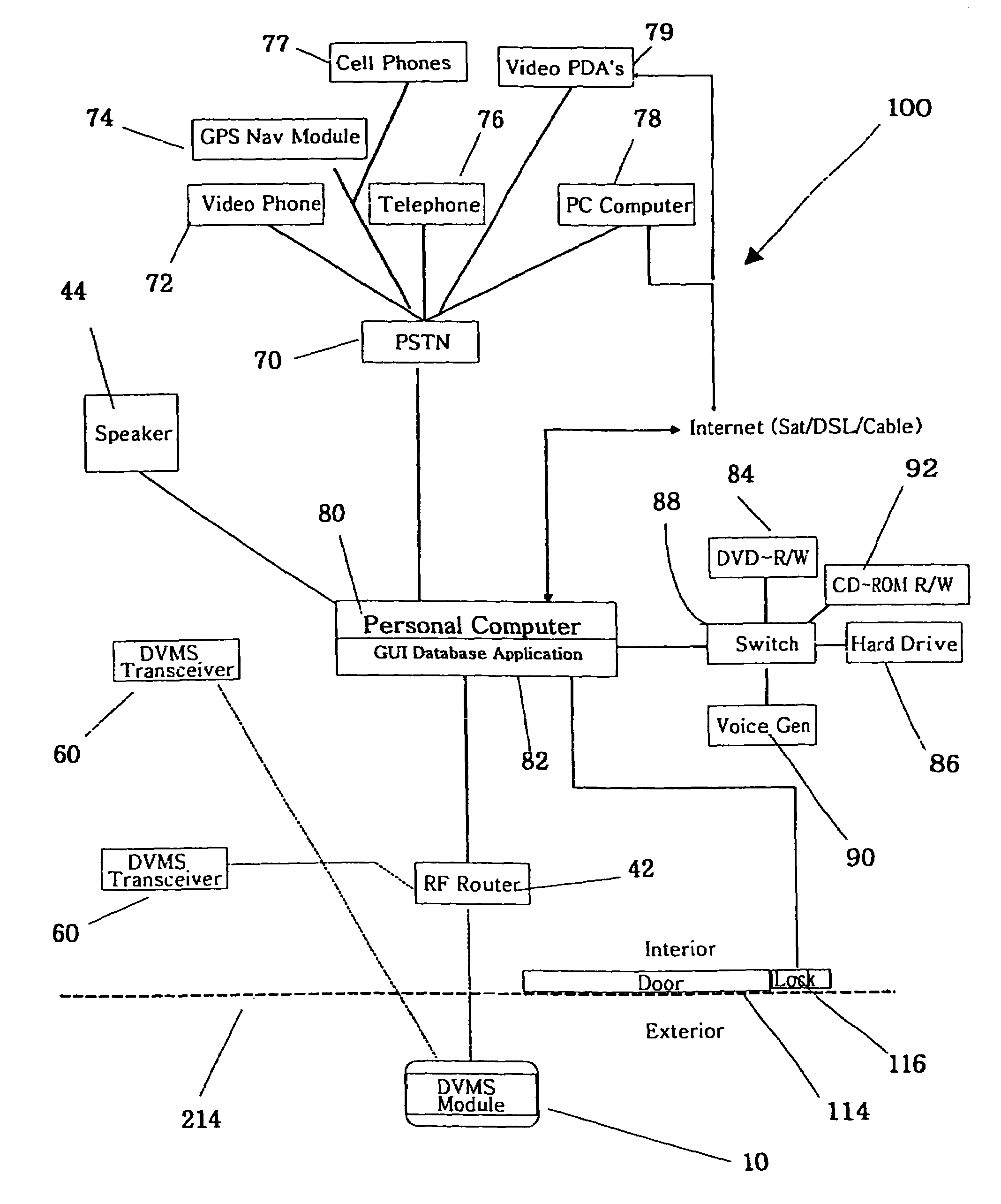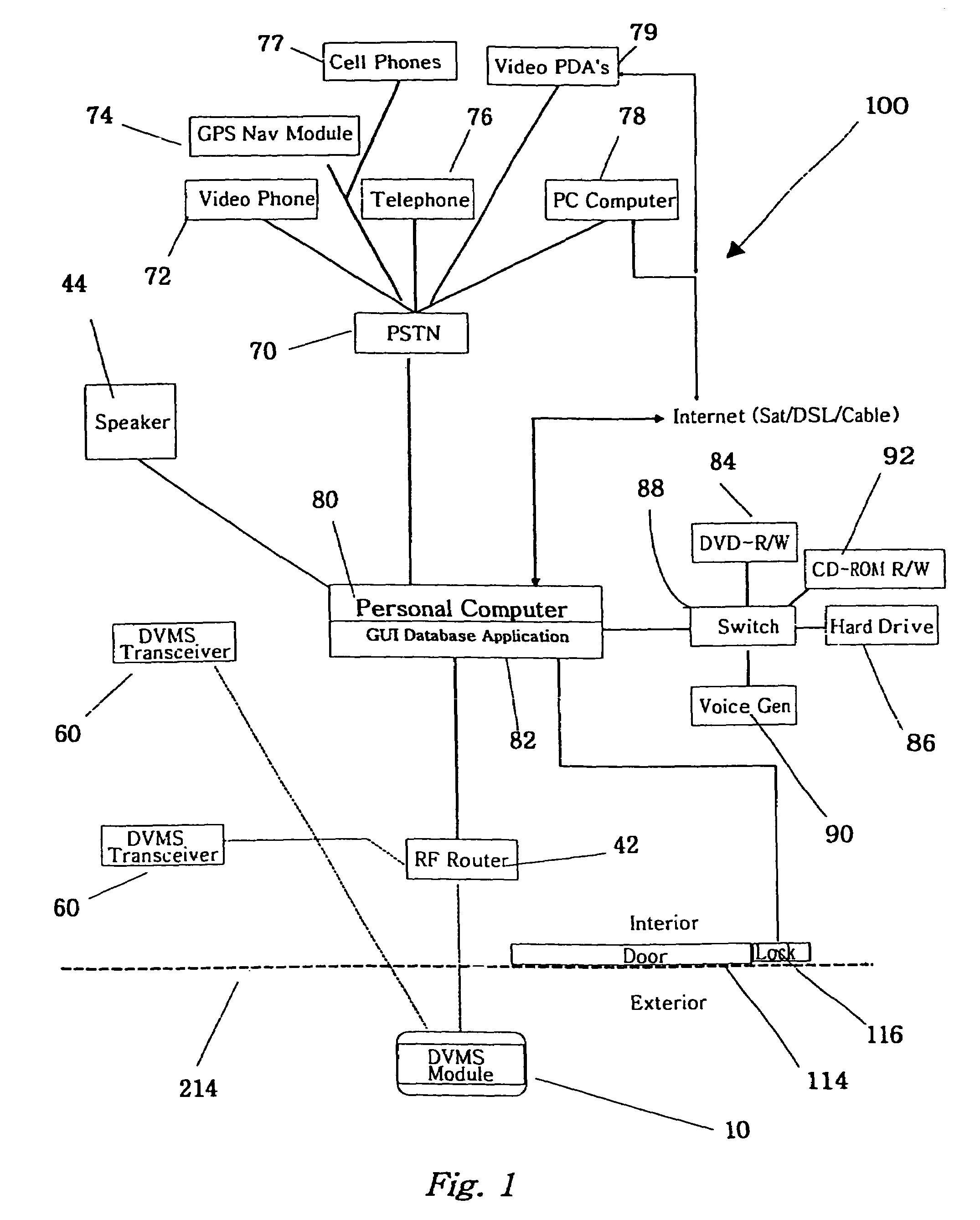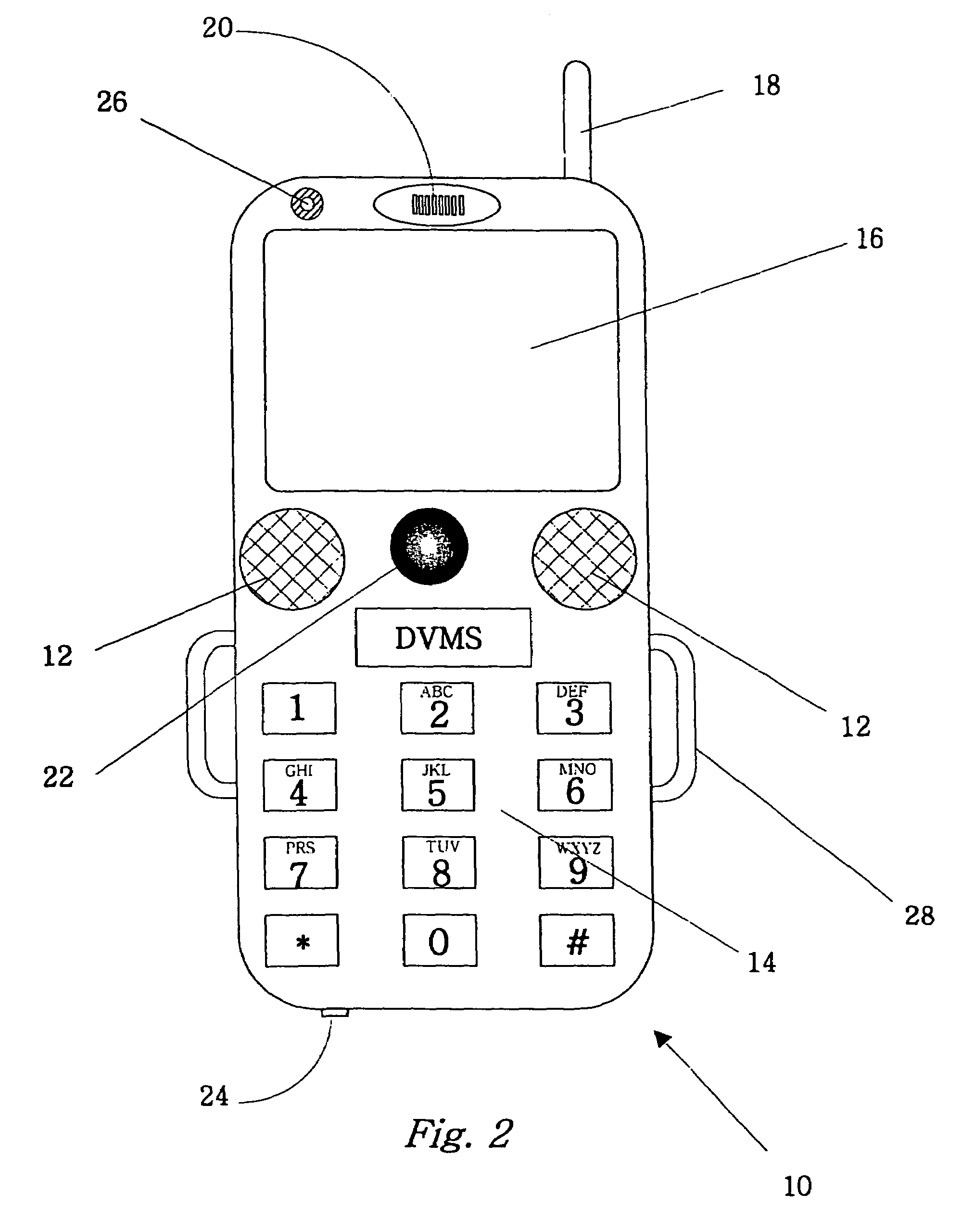Automated audio video messaging and answering system
an answering system and audio video technology, applied in the field of automatic audio video messaging and answering system, can solve the problems of occupants presenting certain security risks, no means to ensure that unwanted access is not obtained, and inconvenient situations, etc., and achieve the effect of simple operation
- Summary
- Abstract
- Description
- Claims
- Application Information
AI Technical Summary
Benefits of technology
Problems solved by technology
Method used
Image
Examples
Embodiment Construction
[0043]The major components of the audio-video communication and answering system 100 are schematically shown in FIG. 1. The exterior of a premises is differentiated from the interior by a demarcation line 214, which represents a wall or other similar structure. The wall 214 has a door 114 and an electronically actuated lock 116. On the exterior is a DVMS module 10, which is in wireless communication with a wireless RF router 42 that is on the interior. It is anticipated that there could be multiple entrances to the premises and multiple DVMS modules. The RF router 42, as shown in FIG. 1, is separate from the computerized controller, which is a personal computer 80, however, the RF router 42 could easily be part of the personal computer 80. A DVMS device is a device that communicates via short-range RF waves (preferably FM) that have a direct view, in that the RF waves can pass through doors, walls and floors. These peripheral devices are used to receive and convey messages to other ...
PUM
 Login to View More
Login to View More Abstract
Description
Claims
Application Information
 Login to View More
Login to View More - R&D
- Intellectual Property
- Life Sciences
- Materials
- Tech Scout
- Unparalleled Data Quality
- Higher Quality Content
- 60% Fewer Hallucinations
Browse by: Latest US Patents, China's latest patents, Technical Efficacy Thesaurus, Application Domain, Technology Topic, Popular Technical Reports.
© 2025 PatSnap. All rights reserved.Legal|Privacy policy|Modern Slavery Act Transparency Statement|Sitemap|About US| Contact US: help@patsnap.com



